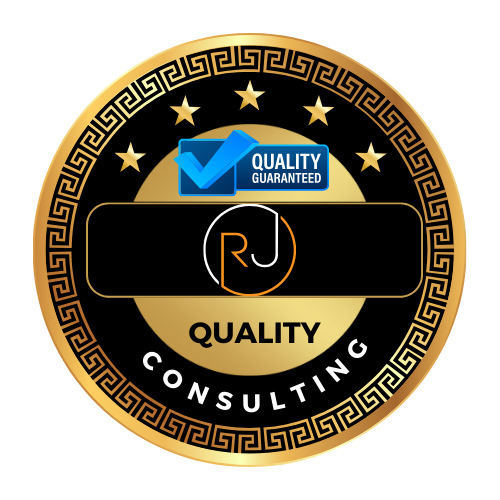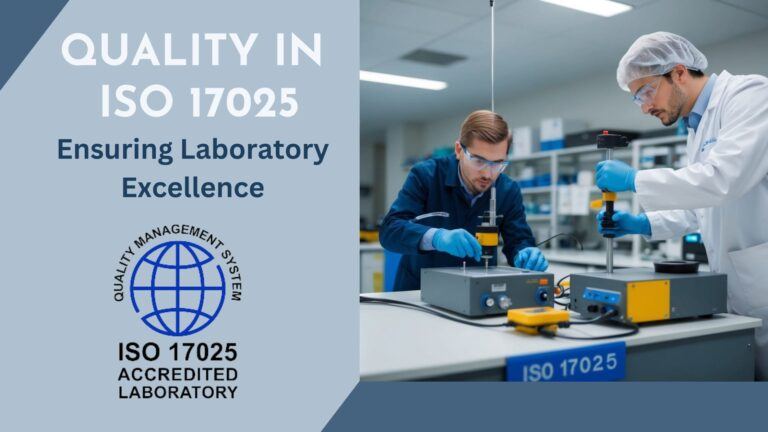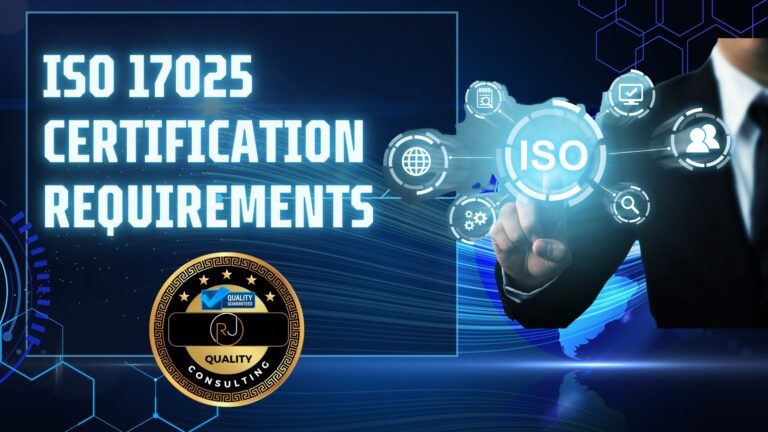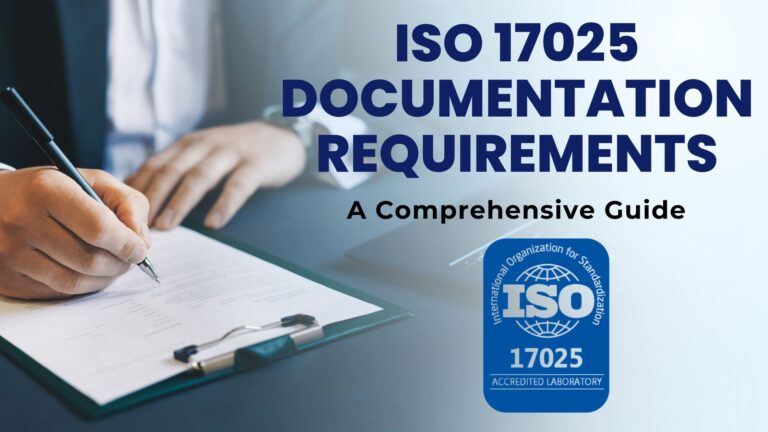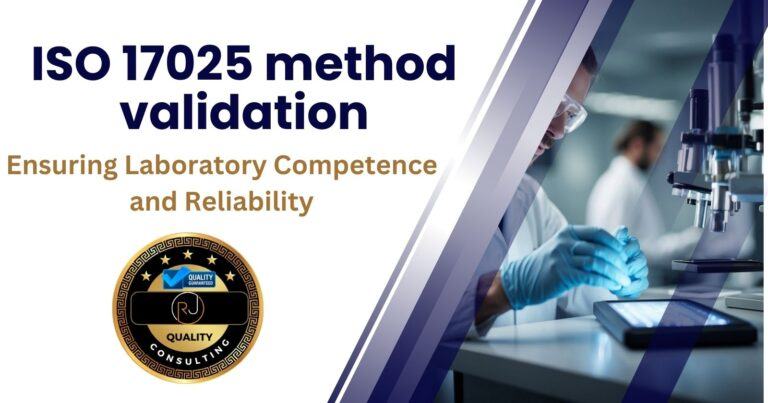ISO 17025 Requirements – Policies and Procedures
ISO/IEC 17025 establishes a framework for labs to show technical competence and reliability in producing test and calibration data. Many labs use this standard to improve practices and build client trust. To meet the ISO 17025 requirements, labs must implement policies and procedures covering everything from personnel to complaint management. Accuracy and consistency in data are critical for maintaining credibility and achieving accreditation.
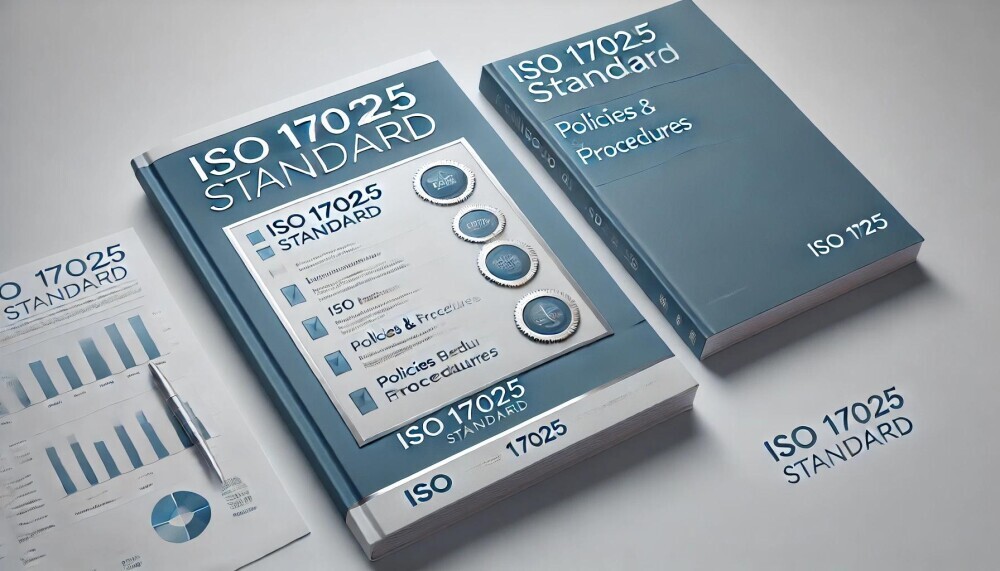
For labs pursuing or maintaining accreditation, understanding the detailed requirements for these documented policies and procedures is a practical step. Whether aiming for compliance or already accredited, following these structured steps from ISO/IEC 17025:2017 can bring clarity and consistency to your operations.
As you comb through the ISO/IEC 17025:2017 standard, you will come to find out that there are 9 required procedures, 1 required documented process (essentially a procedure) and four required policies (one of them being a list of quality objectives). The verbiage of the standard is usually something to the effect of “the laboratory shall have a procedure for… and that procedures shall include …”.
I have taken the liberty to comb through the standard for you and come up with the list below to show you what the required policies and procedures are for the ISO/IEC 17025:2017 standard.
I have also created a video walkthrough of the post below:
ISO/IEC 17025 Implementation Masterclass
Complete documentation + step-by-step training to get your lab accreditation-ready with confidence.
What you get (features)
- Customizable Quality Manual aligned to ISO/IEC 17025
- All required policies & procedures with matching forms/templates
- 7 training modules (Clauses 4–8, internal audit & management review)
- 20-question quiz + certificate of completion
- Clear instructions on tailoring documents to your lab
Why it matters (benefits)
- Implement faster with proven, audit-ready templates
- Train your team consistently and reduce nonconformities
- Show competence to assessors with documented training & certificate
- Confidently prepare for internal & external audits
- Move from “paper compliance” to a working quality system
1. Personnel Procedure Aligned with Section 6.2.5
This requirement focuses on staff qualifications and ongoing training. Section 6.2.5 mandates documented processes detailing roles, responsibilities, and competency assessments. The procedure ensures that every team member is adequately trained and evaluated with regular performance checks. Maintaining clear records of training and certifications not only supports audits but also builds confidence in the validity of your lab’s results.
2. Equipment Maintenance Procedure in Accordance with Section 6.4.3
Section 6.4.3 dictates that labs maintain equipment through scheduled checks, preventive maintenance, and proper calibration. A robust procedure records service logs and routine inspections to prevent unexpected breakdowns. By adhering to prescribed maintenance intervals and guidelines, labs can minimize measurement uncertainties and ensure reliable instrument performance for accurate testing and calibration outcomes.
3. Externally Provided Products and Services Procedure per Section 6.6.2
Labs frequently use third-party products and services. Section 6.6.2 requires a clear procedure for evaluating and selecting suppliers, including maintaining an approved vendor list. This process sets criteria for vendor qualification and performance reviews. With documented assessments, labs ensure that only quality products and reliable services are integrated into laboratory operations, thereby upholding overall test integrity.
4. Review of Requests, Tenders and Contracts Procedure Aligned with Section 7.1.1

Section 7.1.1 emphasizes a thorough evaluation of incoming requests, tenders, and contracts. This procedure helps the lab assess its capacity and client requirements before commencing any work. By clearly defining responsibilities, service expectations, and liability limits, labs minimize misunderstandings and ensure that project timelines align with operational capabilities, fostering transparency and efficient workload management.
5. Test Methods and Procedures According to Section 7.2.1
ISO 17025 mandates the use of validated and documented test methods. Section 7.2.1 outlines the need for clear procedures covering sample handling, testing steps, and result recording. This approach ensures consistency, proper analysis, and reliable measurement of uncertainty. Well-documented methods enable labs to maintain high standards of reproducibility and deliver trustworthy calibration and testing outcomes.
6. Validation Procedure in Conformance with Section 7.2.2
Section 7.2.2 requires labs to document a validation process for new or modified test methods. This procedure involves a series of trials and error analyses to confirm that a method yields accurate and consistent results. A robust validation process demonstrates that the method is fit for its purpose, thereby reassuring stakeholders that test outcomes are dependable. Clear validation steps are critical for quality assurance.
7. Handling of Test or Calibration Items Aligned with Section 7.4.1
This procedure details the proper handling of test or calibration items from receipt to final storage or dispatch, as required by Section 7.4.1. It includes guidelines for item identification, managing sensitive samples, and ensuring appropriate storage conditions. Documenting these processes prevents mix-ups and contamination while ensuring that each sample remains traceable and that testing standards are upheld throughout the workflow.
8. Monitoring the Validity of Results Procedure per Section 7.7.1

Maintaining the accuracy of test results is essential. Section 7.7.1 outlines the need for ongoing monitoring of results through quality control checks and proficiency testing. This procedure incorporates repeat tests and chart analyses to compare current data with historical benchmarks. Such monitoring enables labs to quickly detect deviations and implement timely corrections, reinforcing client confidence in the stability of testing processes.
9. Nonconforming Work Procedure in Accordance with Section 7.10
Occasionally, test outcomes may not meet required standards. Section 7.10 mandates a procedure to identify, document, and resolve instances of nonconforming work. This systematic approach ensures that errors are addressed promptly and that corrective actions are taken to prevent recurrence. By keeping detailed records of nonconformance, labs can learn from mistakes and continuously improve their quality management systems.
10. Documented Process for Complaints Following Section 7.9
Although the standard does not technically use the word procedure in section 7.9 but refers to the requirement as a “documented process”. A formal complaints process is critical in any lab setting. Section 7.9 outlines the need for documenting and reviewing complaints. This procedure establishes clear steps for receiving, reviewing, and resolving client concerns, including defined timelines and root-cause analysis. A transparent process not only helps resolve issues swiftly but also provides valuable feedback for ongoing improvements in service quality and operational efficiency.
Here’s a section you can add to your blog post on ISO/IEC 17025:2017 Requirements under the required procedure list, specifically focusing on the Internal Audit Plan in accordance with Section 8.8:
11. Internal Audit Plan 8.8
This is another case where the ISO/IEC 17025:2017 standard does not refer to it as a procedure but requires laboratories to have an internal audit plan and to conduct internal audits at planned intervals to verify compliance with their own quality management system, the standard’s requirements, and accreditation body regulations. A well-structured internal audit plan ensures that all relevant processes, procedures, and activities are reviewed systematically.
Key Elements of an Internal Audit Plan:
- Audit Scope and Objectives: Define the areas, processes, and procedures to be audited, ensuring full coverage of ISO/IEC 17025 requirements.
- Audit Frequency: Establish a schedule based on the complexity of activities, risk levels, and past audit findings.
- Audit Criteria and Methods: Specify applicable requirements, standards, and methods to evaluate conformity.
- Selection of Auditors: Ensure impartiality by appointing auditors who are independent of the audited activities.
- Audit Reporting and Corrective Actions: Document audit findings, identify nonconformities, and implement corrective actions in a timely manner.
- Management Review Integration: Use audit results to drive continual improvement and inform management decisions.
By implementing a robust internal audit plan, laboratories can proactively identify compliance gaps, reduce risks, and maintain accreditation readiness.
Lab Policies, Quality Objectives, and Ongoing Improvement
 Beyond these 10 procedures, a complete ISO 17025 system depends on robust lab policies and clear quality objectives as outlined in Section 8.2.2. These include a quality policy, impartiality and confidentiality policies, along with measurable quality objectives reviewed regularly by management during the ISO 17025 Management Review. Integrating technical procedures with solid policies creates a dependable quality management system that will satisfy any auditor.
Beyond these 10 procedures, a complete ISO 17025 system depends on robust lab policies and clear quality objectives as outlined in Section 8.2.2. These include a quality policy, impartiality and confidentiality policies, along with measurable quality objectives reviewed regularly by management during the ISO 17025 Management Review. Integrating technical procedures with solid policies creates a dependable quality management system that will satisfy any auditor.
ISO 17025 Quality Policy
An ISO 17025 quality policy is a formal statement that defines a laboratory’s commitment to impartiality, competence, and continual improvement in accordance with the ISO/IEC 17025:2017 standard. This policy serves as the foundation for the laboratory’s quality management system (QMS) and ensures that all testing and calibration activities produce reliable, valid, and consistent results. The policy typically includes a commitment to meeting customer, regulatory, and accreditation requirements while upholding the principles of scientific integrity and technical excellence.
A well-structured ISO 17025 quality policy should be clearly documented, communicated, and understood by all laboratory personnel. It should outline the laboratory’s dedication to maintaining unbiased operations, competent personnel, and a structured management system to ensure the quality of test and calibration results. Additionally, the policy must align with the laboratory’s overall objectives and be subject to regular review to support continuous improvement efforts. By implementing a strong quality policy, laboratories can reinforce confidence in their services and demonstrate compliance with ISO/IEC 17025 accreditation requirements.
ISO 17025 Impartiality Policy and Requirements
Detailed in section 4.1 of the standard are the requirements for the ISO 17025 impartiality policy. Not only is it required that laboratory personnel act in an impartial manner, but that risks to impartiality are considered on an on-going basis. This is best done through the regular activity of discussing these issues during the annual Management Review meeting. Since it is a regularly scheduled event, it qualifies and being done on an ongoing basis.
These requirements should all be documented in the impartiality policy itself and staff need to be trained to it. Records should be retained where the employees have signed that they have read and understand the policy.
Your adventure toward ISO 17025 compliance isn’t just about ticking boxes. It is about adopting a system that brings clarity, consistency, and confidence to every test and calibration you perform.
ISO 17025 Confidentiality Policy and Requirements
An ISO 17025 confidentiality policy is a formal declaration that outlines a laboratory’s commitment to safeguarding all information obtained or created during its testing and calibration activities. This policy ensures that customer data, proprietary information, and any other sensitive materials are protected against unauthorized access or disclosure, thereby maintaining trust and compliance with the ISO/IEC 17025:2017 standard. According to section 4.2 of the standard, laboratories are responsible for managing all information acquired during laboratory activities and must inform customers in advance if any information is intended to be made public.
To effectively implement this policy, laboratories should establish legally enforceable agreements that bind all personnel, including external contractors and committee members, to confidentiality obligations. In situations where disclosure of confidential information is mandated by law or contractual obligations, the laboratory is required to notify the customer or individual concerned, unless prohibited by law. Additionally, information about a customer obtained from sources other than the customer must be treated as confidential and not shared without consent from the source. By adhering to these guidelines, laboratories demonstrate their dedication to protecting client information, thereby fostering trust and ensuring compliance with international standards.
ISO 17025 Quality Objectives
ISO 17025 quality objectives are fundamental components of the ISO 17025 management system requirements, serving as measurable targets that align with the laboratory’s commitment to competence, impartiality, and consistent operation. Established by laboratory management, these objectives ensure that the policies set forth in the quality management system are effectively implemented and acknowledged at all organizational levels. They encompass aspects such as enhancing testing accuracy, reducing turnaround times, improving customer satisfaction, and ensuring compliance with regulatory requirements. By setting clear and attainable quality objectives, laboratories can systematically monitor and improve their performance, thereby reinforcing their credibility and reliability in the industry.
Section 8.9 of the standard emphasizes the importance of these quality objectives as integral inputs to the ISO 17025 management review process. During these reviews, laboratory management assesses the extent to which quality objectives have been met, identifies areas for improvement, and allocates necessary resources to address any shortcomings. This cyclical evaluation fosters a culture of continuous improvement, ensuring that the laboratory not only maintains compliance with ISO/IEC 17025:2017 but also adapts to evolving industry standards and customer expectations. By regularly reviewing and updating quality objectives, laboratories demonstrate their dedication to excellence and their proactive approach to sustaining high-quality operations.
Continuously reviewing and updating procedures ensures your lab remains agile and responsive. Staying committed to essential quality objectives fosters an environment of precision and transparency. Some laboratories even consider adding the ISO 9001 certification along with their ISO 17025 accreditation. Understanding the similarities and differences between ISO 9001 vs ISO 17025 can help a laboratory determine if this is the right course or not.
ISO/IEC 17025:2017 requires laboratories to document specific procedures and policies to ensure compliance, reliability, and technical competence. By maintaining these procedures and policies, laboratories can ensure compliance with ISO/IEC 17025:2017 and uphold the highest standards of accuracy, reliability, and quality.
Recommended Documentation
While these policies and procedures are, at bare minimum, required by the ISO/IEC 17025, there are also highly recommended documents that most laboratories will implement that help the lab ensure they will do well in an accreditation assessment by an outside accreditation body. These documents include:
- A Quality Manual with the same structural alignment as the standard
- Document and Record control procedures
- Management Review Procedure with meeting agenda/minutes template
- Risk and Opportunities Procedure with risk register template
- Uncertainty of Measurement Procedure (semi required)
- Procedure on how to handle and transport reference standards (semi required)
Although the above recommendations are not technically required, elements of them are as far as some type of objective evidence that is necessary to support complete compliance to the ISO/IEC 17025:2017 standard. As most of my readers know, I am a certified ISO/IEC 17025:2017 assessor and have audited many laboratories and I can tell you that I highly recommend implementing these, so called, recommended documents to ensure you are completely compliant with the standard.
🕒 Book Your Free 45-Minute Consultation
Have questions about ISO/IEC 17025 or ISO 9001 implementation or accreditation? Schedule a free 45-minute consultation with me to discuss your Company or laboratory’s needs and how we can achieve compliance together.
Schedule Your Consultation